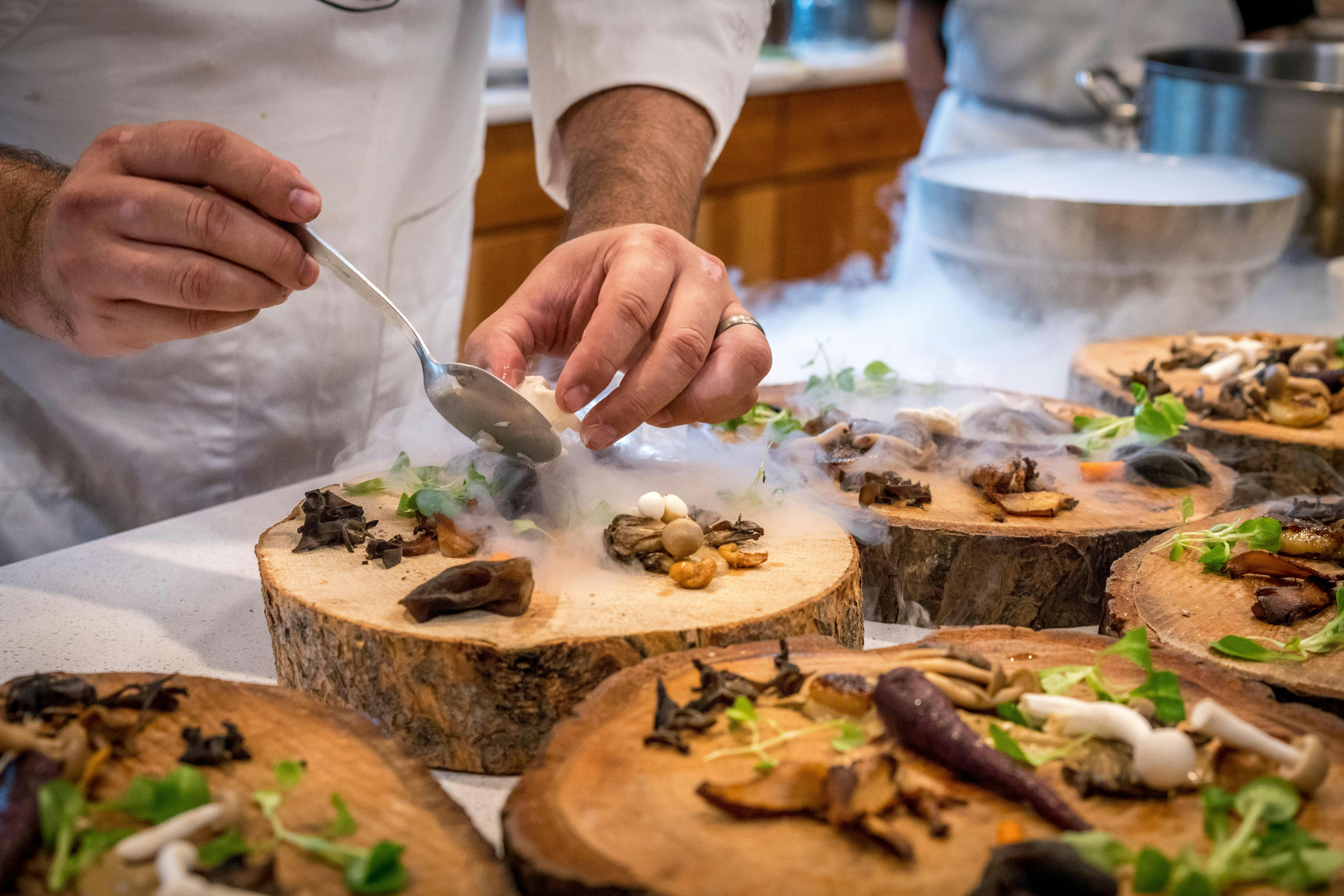
The evolution of excellence
In the ever-evolving world of fine dining, the coveted Michelin stars continue to represent the pinnacle of culinary achievement. Yet, today’s haute cuisine extends far beyond traditional metrics of excellence, embracing innovation, sustainability, and cultural fusion in unprecedented ways.
The modern michelin landscape
Beyond the stars
Traditional ratings now consider:
- Environmental impact
- Social responsibility
- Innovation in sustainability
- Cultural preservation
- Community engagement
The new metrics of excellence
Modern evaluation encompasses:
- Ingredient sourcing ethics
- Zero-waste practices
- Staff well-being
- Cultural contribution
- Technical innovation
The transformation of fine dining
Technology meets tradition
Contemporary kitchens feature:
- AI-assisted flavor pairing
- 3D-printed garnishes
- Sonic-enhanced tasting experiences
- Temperature-perfect cooking systems
- Augmented reality presentations
Sustainable luxury
Leading restaurants prioritize:
- Zero-kilometer ingredients
- Waste reduction programs
- Renewable energy usage
- Biodegradable packaging
- Water conservation systems
The new dining experience
Sensory innovation
Modern haute cuisine engages:
- Multi-sensory presentations
- Sound-paired courses
- Aromatic orchestration
- Textural contrasts
- Visual storytelling
Interactive elements
Cutting-edge restaurants offer:
- Chef-guest collaborations
- Table-side preparations
- Digital menu interactions
- Personalized taste profiles
- Virtual reality elements
Global influences
Cultural fusion
Contemporary menus showcase:
- Cross-cultural techniques
- Indigenous ingredients
- Historical reinterpretations
- Regional adaptations
- Global flavor combinations
Local distinction
Emphasis on:
- Terroir expression
- Seasonal micro-harvesting
- Native ingredients
- Traditional techniques
- Regional storytelling
The science of cuisine
Molecular gastronomy evolution
Advanced techniques include:
- Sonic-enhanced flavors
- Texture transformation
- Temperature manipulation
- Chemical restructuring
- Aromatic engineering
Research and development
Modern kitchens invest in:
- Food labs
- Flavor databases
- Texture analysis
- Nutritional optimization
- Preservation innovation
Sustainability at the core
Environmental consciousness
Leading establishments focus on:
- Carbon-neutral operations
- Regenerative agriculture
- Waste elimination
- Water conservation
- Energy efficiency
Ethical sourcing
Priority areas include:
- Fair trade partnerships
- Local producer support
- Endangered species protection
- Traditional farming preservation
- Seasonal adaptation
The human element
Chef evolution
Modern chefs are:
- Scientific researchers
- Cultural ambassadors
- Environmental advocates
- Social media personalities
- Education providers
Team dynamics
Contemporary kitchens emphasize:
- Work-life balance
- Mental health support
- Continuous education
- Collaborative creation
- Equal opportunity
Digital integration
Social media impact
Digital presence through:
- Behind-the-scenes content
- Interactive experiences
- Virtual masterclasses
- Online communities
- Digital reservations
Technology enhancement
Modern tools include:
- AI menu planning
- Blockchain ingredient tracking
- Smart kitchen systems
- Digital wine pairing
- Virtual tastings
The future landscape
Emerging trends
Watch for:
- Bioengineered ingredients
- Personalized nutrition
- Virtual dining experiences
- Climate-change adapted menus
- Hybrid service models
Innovation frontiers
Development areas include:
- Cellular agriculture
- Neurogastronomy
- Sustainable proteins
- Waste-to-taste conversion
- Carbon-negative dining
The guest experience
Personalization
Modern restaurants offer:
- Dietary preference adaptation
- Personal taste profiling
- Custom tasting journeys
- Health-optimized options
- Cultural consideration
Education and engagement
Establishments provide:
- Culinary workshops
- Ingredient education
- Sustainability awareness
- Cultural context
- Technical demonstrations
Economic evolution
Business adaptation
Modern models include:
- Dynamic pricing
- Experience packages
- Virtual extensions
- Global collaborations
- Multi-channel revenue
Investment in future
Focus areas:
- Research facilities
- Staff development
- Sustainable infrastructure
- Digital integration
- Community programs
Looking forward
The future of haute cuisine balances tradition with innovation, luxury with responsibility, and exclusivity with accessibility. As we move forward, the definition of excellence in fine dining continues to evolve, embracing new technologies and responsibilities while honoring the timeless art of gastronomy.
For more exclusive insights into the world of luxury, explore our curated collection of articles. Follow our Luxury Insights section for weekly updates on the ever-evolving world of premium lifestyle and luxury innovations and subscribe to our newsletter.

Add a Comment